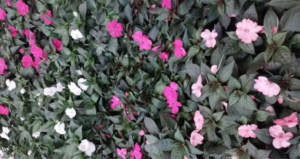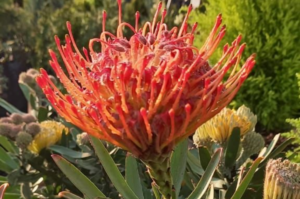Zonal geraniums are annuals that have large flower clusters on tall stems. They get their name from the distinct bands of color on their foliage and have vibrant blooms that can brighten up any garden or indoor space. They’re easy to grow and maintain and come in a wide range of varieties and colors.

New Guinea Impatiens
New Guinea impatiens are a popular choice for gardeners who want to add a splash of color to their shady



